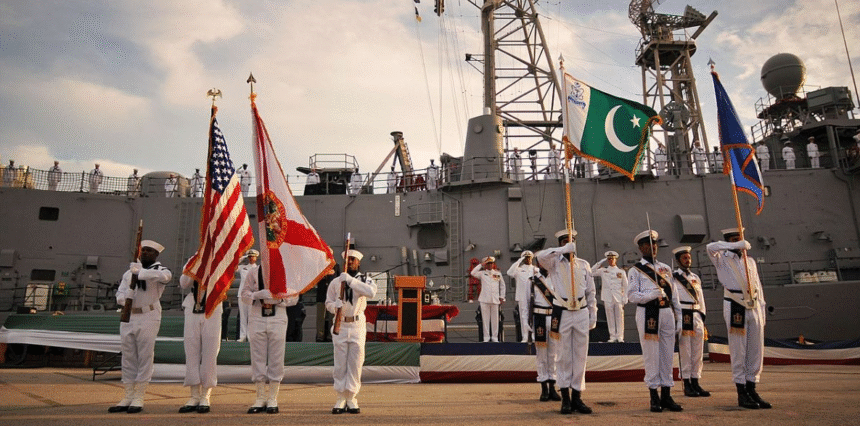5 Brutal Truths Behind Trump-Munir Lunch: Why India Shouldn’t Be Shocked | Geopolitical Wake-Up Call
Chapter 1: Introduction – A Diplomatic Gesture That Echoed Decades
When Field Marshal Asim Munir dined at the White House with former US President Donald Trump, the optics were unmistakable. For India, it was a jarring moment—reminiscent of Cold War patterns that have refused to fade. But for the United States and Pakistan’s military establishment, it was business as usual: a symbolic reaffirmation of enduring, transactional ties.
Chapter 2: Why India Should Not Be Surprised
While New Delhi bristled at the optics of the White House lunch, strategic observers argue that this development should not be surprising. It is the continuation of a historical pattern wherein Washington, regardless of political rhetoric, quietly maintains robust institutional engagement with the Pakistan Army. This is a relationship defined not by grand strategy but by institutional inertia and shared tactical interests.
Chapter 3: Strategic vs. Transactional – The Nature of US-Pakistan Military Ties
Despite periods of diplomatic chill and deep political differences, the Pentagon has never fully severed its relationship with Rawalpindi. Instead, the US military has chosen a transactional approach—compartmentalising Pakistan’s duplicity in counterterrorism and nuclear proliferation, while maintaining backchannel cooperation through the Department of Defense.
Chapter 4: A History of Recurring Estrangement and Reconciliation
Since the 1950s, the US-Pakistan military relationship has been cyclical—punctuated by ruptures and rapid recoveries. Sanctions post-nuclear tests in 1998, followed by resumption of aid post-9/11; criticism over Osama bin Laden’s sheltering in Abbottabad in 2011, then CENTCOM delegations resuming military training—these patterns illustrate a deeper dynamic that overrides temporary friction.
Chapter 5: The CENTCOM Testimony and Washington’s Mixed Signals
General Michael Kurilla’s recent public commendation of the Pakistan Army as a “phenomenal partner” in counterterrorism, given before the House Armed Services Committee, reinforced the continued Pentagon-Rawalpindi synergy. This occurred mere days before Munir’s White House lunch—demonstrating a coordinated institutional message of reassurance.
Chapter 6: Why the Relationship Endures – Military Education, Cultural Affinity, and Institutional Memory
The roots of the US-Pakistan military partnership run deep, beginning with Pakistan’s strategic pivot away from India post-Partition. Pakistani officers trained in elite American military institutions built long-lasting professional and cultural relationships with their counterparts in the Pentagon. This created a generational affinity that sustained engagement even through political ruptures.
Chapter 7: The IMET Programme – Shaping Pakistan’s Officer Corps
The US’s International Military Education and Training (IMET) programme shaped successive generations of Pakistani officers. Through placements at the US Army War College, Fort Leavenworth, and the National Defense University, Pakistani officers adopted American operational doctrines, civil-military frameworks, and developed soft influence within strategic US circles.
Chapter 8: Cold War Complicity – The Pakistan Army as a Gateway to China
In 1971, General Yahya Khan’s covert facilitation of Henry Kissinger’s trip to Beijing positioned Pakistan as a geopolitical linchpin. This earned the Pakistan Army enduring credit in Washington’s strategic calculus. It proved that Rawalpindi could deliver diplomatic value beyond South Asia, reinforcing its leverage.
Chapter 9: Dual Identities – Islamist Orientation vs. Western Operational Culture
Under General Zia-ul-Haq, the Pakistan Army became more Islamist, nurturing jihadist proxies. Yet it retained Western military structures and education. Christine Fair famously identified this dualism as pragmatic—a force seeking Chinese weapons but craving American respect. This schizophrenia underpins Pakistan’s ambiguous foreign policy.
Chapter 10: Strategic Ambivalence – Beijing’s Arms, Washington’s Approval
China remains Pakistan’s top military supplier, and has helped Islamabad develop the JF-17, missile systems, and nuclear platforms. But the Pakistan Army’s institutional loyalty leans Westward. English-speaking, Western-educated officers prefer US doctrines and NATO military exercises over PLA models.
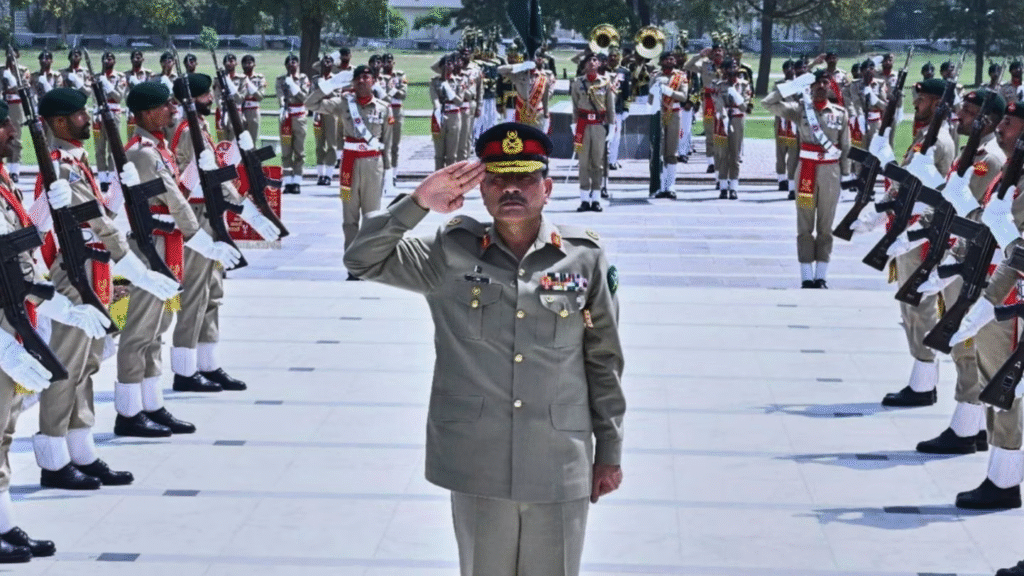
Chapter 11: Why the Pakistan Army Still Looks Westward
Retired officers frequently join US think tanks, place children in American universities, and settle in Washington. Even while cultivating strategic dependency on China, the Pakistan Army maintains a deep cultural and doctrinal comfort with Western military paradigms.
Chapter 12: The Pentagon’s Persistent Preference for Rawalpindi
From the Pentagon’s perspective, dealing with Rawalpindi offers operational predictability. Unlike civilian governments in Islamabad, the army maintains continuity, institutional discipline, and a shared vocabulary with the US military. Hence, CENTCOM, not the State Department, leads most bilateral dialogues.
Chapter 13: Political Optics vs. Military Realism
While political leaders in the US periodically suspend aid, impose sanctions, or deliver stern warnings, the military establishment works in parallel to maintain essential communication. This bifurcation allows Washington to preserve tactical flexibility while appearing to uphold democratic principles.
Chapter 14: Strategic Concerns in New Delhi
India’s diplomatic discomfort over the Trump-Munir lunch stems from a deeper concern: that Washington has not decisively tilted away from Pakistan. Despite growing US-India defence ties and shared Indo-Pacific priorities, the Pakistan Army retains an unspoken strategic utility in the Pentagon’s playbook.
Chapter 15: Iran, the Taliban, and Tactical Cooperation
The US continues to depend on Pakistan’s military for logistical and intelligence support regarding Iran and Afghanistan. As Washington reevaluates its Middle East footprint, Rawalpindi’s geographical location and espionage reach remain valuable.
Chapter 16: Pakistan’s Balancing Act – Between Beijing and Washington
Pakistan seeks Chinese capital and weapons, but fears losing the Western military imprimatur. Beijing’s ideology-driven, highly centralised military system does not appeal to Pakistan’s army brass, who see themselves as politically autonomous and culturally Westernised.
Chapter 17: The Legacy of Institutional Embedding
Generations of military-to-military cooperation—from SEATO and CENTO to present-day CENTCOM interactions—have embedded institutional habits that are difficult to dismantle. These habits persist even when diplomatic ties falter, explaining why the Munir lunch should not surprise seasoned analysts.
Chapter 18: Strategic Denialism and India’s Policy Blindspot
India often underestimates the depth of US-Pakistan military ties, assuming political divergence equals strategic detachment. This denialism weakens Indian diplomatic leverage. A realistic assessment would recalibrate expectations, not discard the Indo-US partnership, but acknowledge its layered contradictions.
Chapter 19: The Risks of Overreliance on Strategic Optics
Optics matter in diplomacy, but too much focus on high-visibility moments—like a lunch or handshake—can obscure structural realities. India must move beyond outrage and anchor its foreign policy in long-term engagement, not episodic responses.
Chapter 20: Conclusion – What the Munir Lunch Really Signifies
Trump’s lunch with Field Marshal Munir is not a betrayal—it is a reaffirmation of the deeply entrenched, historically shaped military relationship between Washington and Rawalpindi. It signals continuity, not change. And it reminds India that in the realpolitik of international relations, sentiment matters far less than strategic calculus.
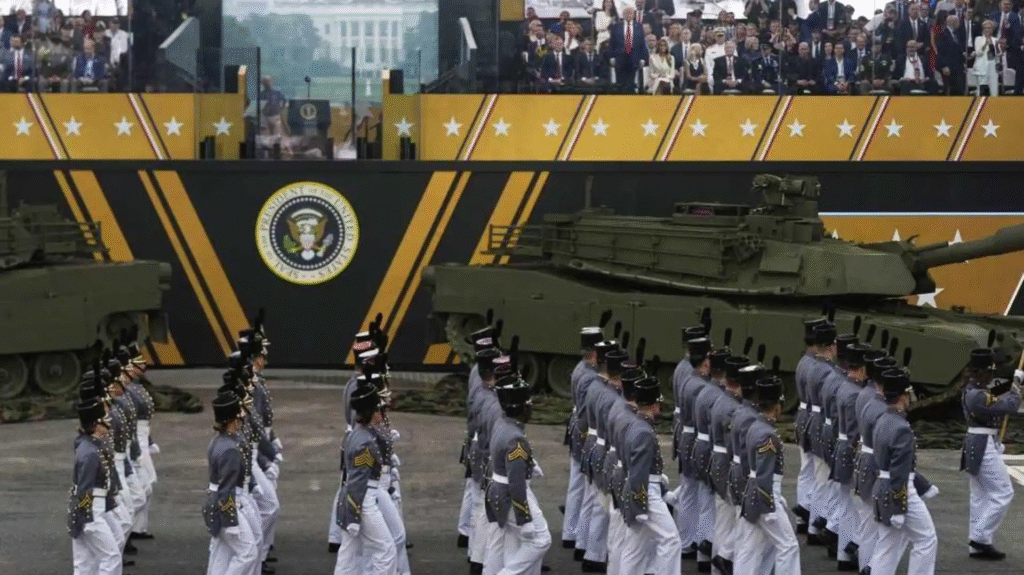
Chapter 21: Post-Cold War Realignments and the Resilience of the Old Guard
The collapse of the Soviet Union ushered in a radically different strategic era for South Asia. India, which had once relied on Moscow for military and diplomatic support, began liberalizing its economy and warming up to Washington. Meanwhile, Pakistan leveraged its old Cold War military credentials to retain its importance in American strategic thinking.
Even though Pakistan’s relevance in direct US military calculus declined with the Soviet exit from Afghanistan, its geographic proximity to the Middle East and Central Asia allowed it to retain tactical utility—particularly as the War on Terror gathered momentum post-9/11.
Chapter 22: The 1990s – Decade of Divergence and Disruptions
The 1990s saw significant deterioration in US-Pakistan ties. After Pakistan’s nuclear tests in 1998, Washington imposed sanctions. However, the sanctions proved temporary. With the Kargil War in 1999 and Musharraf’s coup, Washington condemned Islamabad diplomatically but re-engaged militarily.
Throughout this period, India misread the nature of Washington’s punitive actions—mistaking short-term sanctions for long-term strategic distancing.
Chapter 23: The Post-9/11 Reset – America’s Return to the Af-Pak Theatre
Following the September 11 attacks, the US required immediate regional partners. Pakistan, with its ISI networks and geographical positioning, became indispensable for operations in Afghanistan. Despite full knowledge of Pakistan’s duplicity in sheltering the Taliban, Washington proceeded with billions in military aid, expanding Rawalpindi’s leverage.
India watched uneasily as Pakistan re-entered Washington’s good books, even after terror attacks like the 2001 Indian Parliament bombing and the 2008 Mumbai attacks, whose perpetrators had Pakistan links.
Chapter 24: CENTCOM, IMET, and Operational Entrenchment
CENTCOM’s presence in Pakistan grew. Regular war-gaming exercises, officer exchanges, and joint counter-terror planning became routine. Despite a simultaneous deepening of US-India defence ties, especially post-2005 civil nuclear deal, Pentagon kept its Rawalpindi channel active.
The IMET programme, once suspended, was restored. Pakistani officers continued their training in American war colleges. Rawalpindi’s familiarity with US command structures reinforced its operational credibility.
Chapter 25: China’s Rise and Strategic Ambiguity in South Asia
As China’s economic and military rise became evident, US attention shifted to the Indo-Pacific. India emerged as a natural strategic partner. However, the Pentagon’s India outreach was tempered by uncertainty about New Delhi’s strategic clarity and risk appetite.
Pakistan, despite aligning more deeply with China through CPEC and arms deals, reassured Washington of its intention to remain a balancing actor. This duplicitous stance helped Pakistan secure military relevance on both sides.
Chapter 26: The Rise of CPEC and Beijing’s Stake in Pakistan’s Military
The China-Pakistan Economic Corridor (CPEC) created new alignments. Beijing’s financial investments were underpinned by Rawalpindi’s guarantee of security. Yet, Chinese officers often found Pakistani military structures hard to penetrate. The lack of shared training, doctrine, and language created barriers.
This reinforced a paradox—while Pakistan depended on China for strategic survival, it continued to look westward for institutional validation.
Chapter 27: India’s Strategic Calculus – From Hesitation to Engagement
India’s initial hesitation to militarily engage with the US began to fade with the 2005 civil nuclear agreement. Subsequently, joint naval exercises like Malabar, foundational defence agreements (LEMOA, COMCASA, BECA), and increasing arms imports solidified the Indo-US military partnership.
However, India still pursued a doctrine of strategic autonomy, which often baffled US defence officials used to alliance-based partnerships. This limited intelligence-sharing and joint operational planning.
Chapter 28: The 2020s – From Quad to I2U2: A New Security Architecture Emerges
The emergence of minilateral frameworks like the Quad (India, US, Japan, Australia) and I2U2 (India, Israel, US, UAE) signaled a deeper strategic convergence. India’s role as a net security provider in the Indian Ocean gained legitimacy.
However, as Washington doubled down on countering China, its strategic myopia about Rawalpindi’s parallel allegiance to Beijing became more glaring.
Chapter 29: Counterterrorism vs. Counterbalance – US’s Twin Track Dilemma
The Pentagon remained divided—should it prioritise India as a long-term Indo-Pacific anchor or continue tactical engagement with Pakistan for short-term counterterrorism cooperation?
The Trump-Munir lunch suggested that short-term security needs were still shaping long-term optics. It revealed that the counterterrorism framework had not yet fully given way to a counter-China strategy.
Chapter 30: India’s Options in a Bi-Focal US Strategy
India needs to recalibrate. It must:
- Invest more in military interoperability with the US
- Institutionalise strategic dialogue beyond political cycles
- Deepen partnerships with European and ASEAN security players
- Expand regional military diplomacy to African, Gulf, and Indo-Pacific states
India’s long-term aim should be to render the Pentagon’s tactical reliance on Pakistan obsolete by offering a comprehensive strategic value proposition.
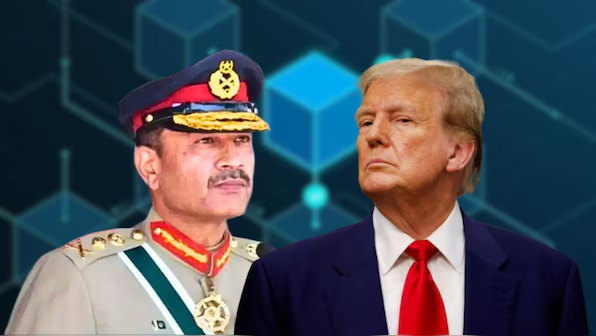
Chapter 31: Rawalpindi’s Deep State and the Architecture of Strategic Thinking
The Pakistan Army is more than a military institution. It is a political actor, an economic empire, and a strategic class with its own worldview. This worldview has been shaped by a perpetual siege mentality—rooted in India’s rise, Afghanistan’s instability, and the army’s own self-appointed role as Pakistan’s guardian of ideology and sovereignty.
This institutional thinking is deeply embedded in the structures of the General Headquarters (GHQ) in Rawalpindi and reinforced by a powerful media, academic, and religious nexus.
Chapter 32: The Army as State – Monopoly Over Foreign and Security Policy
Unlike most democracies, where civilian ministries determine foreign policy, Pakistan’s national security direction flows primarily from GHQ. Civilian leaders are often sidelined in decision-making, and diplomatic priorities are often subordinated to military doctrine.
This unique fusion of state and military is why the US Department of Defense, not the State Department, serves as Washington’s primary engagement channel with Pakistan.
Chapter 33: Strategic Identity Crisis – Westward Doctrine, Eastward Dependency
Rawalpindi finds itself at a crossroads: it depends increasingly on Chinese military and financial support but continues to seek validation from the West. This dual identity creates internal contradictions within Pakistan’s strategic community—caught between Islamist populism and NATO-compatible military professionalism.
This also shapes Pakistan’s preference for tactical ambiguity in diplomacy—a tool for maintaining leverage with both Washington and Beijing.
Chapter 34: The American Pipeline – Think Tanks, Retired Generals, and Strategic Influence
A lesser-known dimension of Pakistan’s military diplomacy is the steady pipeline of retired generals into American think tanks, policy forums, and consultancy roles. Many of these officers trained in the US, maintain contacts in the Pentagon, and act as unofficial envoys of the Pakistan Army’s worldview.
Their presence in institutions like Brookings, CSIS, or even RAND helps keep Rawalpindi’s narrative within Washington’s strategic ecosystem.
Chapter 35: Strategic Storytelling – Managing Narratives in Washington
Over the years, Pakistan’s strategic community has developed expertise in crafting compelling narratives around regional stability, nuclear responsibility, and counterterrorism cooperation. These narratives, often articulated through think tank seminars, op-eds, and closed-door briefings, influence how Washington perceives Islamabad—even during episodes of proven duplicity.
Chapter 36: India’s Absence in Washington’s Security Community
Despite growing US-India ties, Indian strategic voices are underrepresented in Washington’s military think tank circuit. While Indian diplomats are active, the Indian military establishment lacks equivalent representation, reducing its soft influence in shaping US perception.
This asymmetry allows Pakistan’s narrative machinery—anchored in decades of personal connections—to dominate.
Chapter 37: The Limits of Civilian Diplomacy in India’s Strategic Messaging
India’s strategic messaging is often filtered through bureaucratic caution and political considerations. Its diplomats remain focused on bilateral deliverables and trade-related optics, while Rawalpindi’s generals speak directly to America’s security establishment in a language they understand—military risk, logistics, and counterterror cooperation.
Chapter 38: US-India Military Ties – Progress Amid Mistrust
While US-India defence relations have expanded through arms sales, interoperability exercises, and institutional agreements, strategic trust remains shallow. India’s historical non-alignment, purchase of Russian weapons, and hesitation in committing troops to foreign theatres have limited the full evolution of the partnership.
Washington remains uncertain whether New Delhi will ever be a full-spectrum ally like Japan or Israel.
Chapter 39: The Fragility of Public Diplomacy and Optics-Based Outrage
Each episode—be it a White House lunch or a military drill—sparks immense media outrage in India. But these momentary expressions of disapproval rarely translate into policy recalibration. India’s public diplomacy remains reactive rather than anticipatory.
This pattern weakens India’s long-term strategic coherence.
Chapter 40: Bridging the Strategic Trust Deficit
To address this imbalance, India must invest in:
- Strategic communication centres embedded in US think tanks
- Regular officer-level delegations to Washington-based security conferences
- A new generation of Indian military diplomats trained in narrative framing
- Coordinated civilian-military briefings for Capitol Hill and the Pentagon
Only then can New Delhi shape the long-term optics and architecture of its relationship with the US.
Chapter 41: Triangular Geopolitics – A New Balance of Dependencies
The trilateral equation between India, Pakistan, and the United States has evolved from its Cold War-era binaries. It now reflects asymmetrical dependencies: Pakistan relies on the US for legitimacy, India for deterrence; India needs the US for tech access and strategic leverage; and the US seeks both as regional anchors for different missions.
This triangular framework is further distorted by China’s rise and the shifting goals of each actor.
Chapter 42: The China Factor – Shadowing Every Move
Beijing looms over every strategic decision in South Asia. For Pakistan, China is the only reliable backer in terms of unconditional military, economic, and diplomatic support. The CPEC corridor, arms pipeline, and international veto support (e.g., on terror listings) make China indispensable to Rawalpindi.
For India, China represents both the primary military threat and economic competitor. This dual role drives New Delhi to seek external balancing through partnerships with Washington, Tokyo, Canberra, and Paris.
For the US, China is the primary strategic adversary. Yet, the Pentagon continues to see Pakistan as tactically valuable in managing chaos in Afghanistan and balancing terrorism in Central Asia.
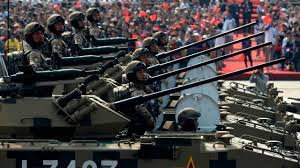
Chapter 43: Strategic Silos – The Failure of Cross-Agenda Coherence
The US often treats its relationships with India and Pakistan as parallel rather than interlinked. This siloed approach creates strategic incoherence—offering military concessions to Islamabad while expecting strategic convergence from Delhi.
India perceives this as hypocrisy, while Pakistan exploits it as a negotiating asset.
Chapter 44: The Silent Axis – China-Pakistan-Iran Signals
While often underestimated, the strategic coordination between China, Pakistan, and Iran is growing. Joint naval exercises, intelligence coordination, and anti-US rhetoric have intensified. These alignments, while not formal alliances, signify a loose balancing axis against US and Indian influence in the region.
This convergence should push the US towards a clearer strategic bet in South Asia—especially as it seeks to retain relevance in the Indian Ocean.
Chapter 45: The American Dilemma – Tactical Utility vs. Strategic Clarity
Washington faces a choice: continue hedging with Pakistan for tactical operations or build irreversible strategic convergence with India. The Trump-Munir episode suggests the former remains dominant. Yet, the long-term interest of the US lies in betting on democratic, technologically integrated, and globally convergent partners like India.
Chapter 46: India’s Strategic Doctrine – Autonomy vs. Alignment
India’s insistence on strategic autonomy remains both a strength and a constraint. It enables flexibility but hampers deep interoperability with Western allies. To achieve greater influence, India must:
- Define strategic red lines more clearly
- Show greater agility in joint force operations
- Institutionalise multilateral military diplomacy
Chapter 47: Diplomacy 2.0 – Redefining Soft Power and Messaging
Beyond military engagements, India needs to build soft power structures that mirror the Pakistan army’s influence architecture:
- Embed retired Indian generals in Western think tanks
- Support military academics in global defence journals
- Shape narratives around shared democratic and technological values
Chapter 48: Public Opinion and Democratic Constrictions
In India, foreign policy is increasingly influenced by public opinion. Episodes like the Trump-Munir lunch generate media fury but little policy follow-up. To counterbalance this, New Delhi needs a standing bipartisan strategic advisory council that transcends electoral cycles.
Chapter 49: Toward a South Asia Security Doctrine
India must lead the articulation of a South Asia-wide strategic doctrine that includes:
- Counterterrorism frameworks
- Maritime security collaboration
- Cyber deterrence pacts
- Post-crisis confidence-building measures
Such a doctrine would force Washington to recognise India not just as a partner, but as an architect of regional order.
Chapter 50: The Road Ahead – From Victimhood to Vision
India’s strategic discourse must move from reactive disappointment to proactive design. Rather than being surprised by events like the Trump-Munir lunch, it must shape the next ones. The future lies not in complaining about legacy alliances but in crafting new ones.
This requires:
- Strategic patience
- Institutional vision
- Narrative discipline
- And a readiness to lead, not follow
If New Delhi can evolve from a defensive power to a designer of global rules, lunches in Washington will no longer signal betrayal—they will follow India’s script.
Also Read : Tragic Bengal Blast: 16-Year-Old Girl Killed During Vote Count – 3 Trinamool Workers Blamed | Outrage Erupts


